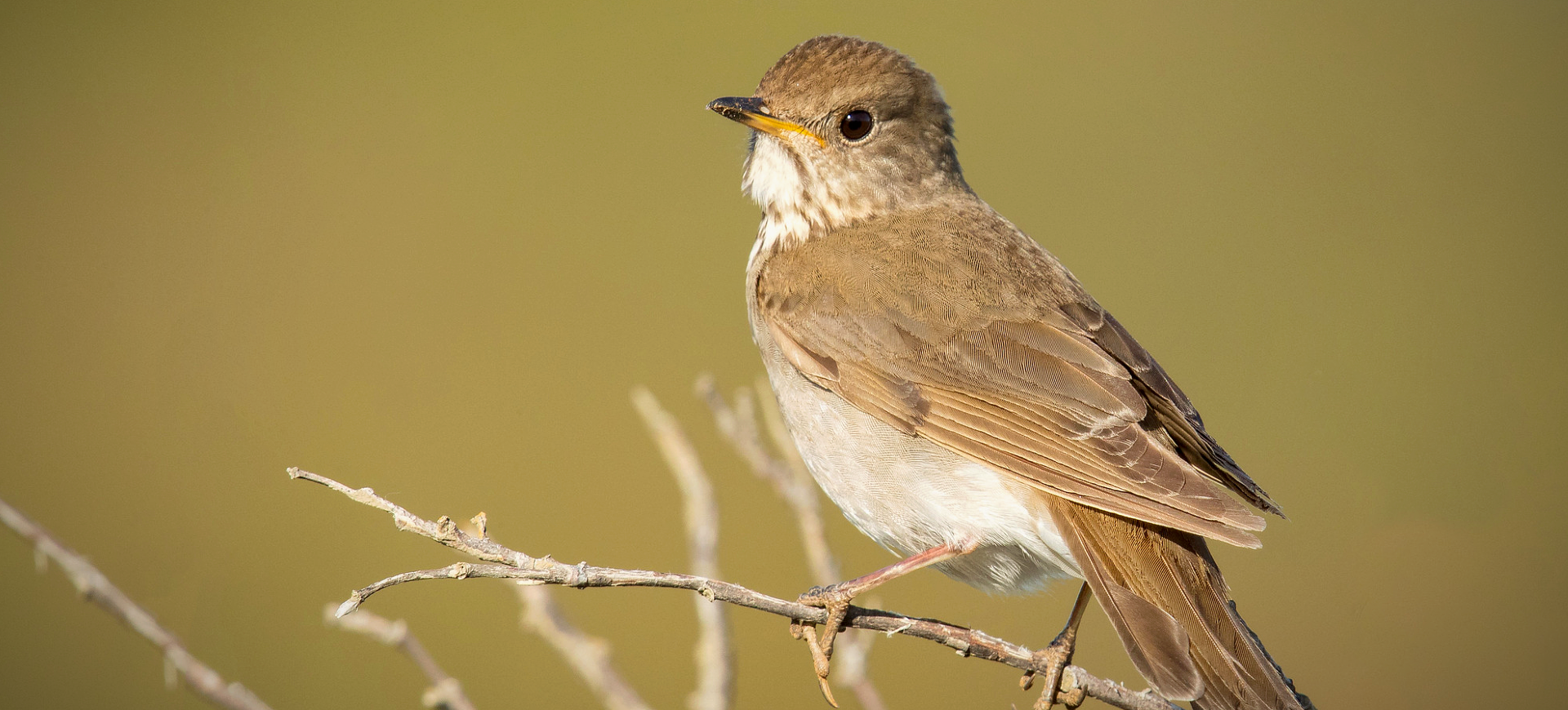Overview
The American Robin, known scientifically as Turdus migratorius, is a migratory songbird of the thrush family. It is widely recognized for its rich, caroling voice and striking appearance, characterized by a red or orange breast and a dark, grayish back. These birds are renowned for their adaptability to various environments, thriving in urban, suburban, and wild areas across North America. They are often spotted hopping across lawns, gardens, and city parks, foraging for worms and insects.
American Robins symbolize spring in many parts of North America, arriving with the season’s change. Their diet shifts seasonally; while they primarily consume invertebrates like earthworms during spring and summer, they switch to fruits and berries in the fall and winter. This dietary flexibility helps them to survive in different climates and conditions. They are also known for their distinctive nesting behavior, often building nests in the forks of trees or on human structures like window ledges and eaves.
These birds play a significant role in various ecosystems. They are important as seed dispersers, aiding in the propagation of many fruit-bearing plants. Additionally, their presence in urban and suburban areas makes them an accessible subject of study for ornithologists and citizen scientists, contributing valuable data to understanding bird behavior and ecology.
Taxonomy
Kingdom
Phylum
Class
Order
Family
Genus
Species
Type
Current distribution:
The American Robin is widely distributed across North America, from Alaska and Canada to Mexico. It is found in all 48 contiguous states in the United States, showcasing its adaptability to various climates and environments. During the breeding season, it is predominantly found in the northern parts of its range, including Canada and the northern United States.
In the winter, many populations migrate to the southern United States and Mexico, although some remain in their northern range if food sources are abundant. This migration pattern is somewhat flexible and varies among individual birds, with some choosing to overwinter in milder northern climates. Their presence in various habitats, from rural to urban areas, makes them one of North America's most commonly sighted birds.
Physical Description:
The American Robin is notable for its distinctive plumage. The adult male typically has a bright red or orange breast, contrasting with its dark gray to black head and upper parts. While appearing similarly, the female usually has a paler breast and is slightly less vibrant in color. Both sexes have white lower bellies and under-tail coverts, with a yellow bill bordered by a black line.
In terms of size and build, the American Robin is a medium-sized bird, robust and round-bodied, which aids in its foraging habits. Its legs are long and sturdy, suitable for hopping and running on the ground. The bird’s eyes are keen and alert, indicating its active foraging lifestyle. During flight, the American Robin displays a smooth and direct pat with rapid wing beats, a common characteristic among thrushes.

Lifespan: Wild: ~5 years || Captivity: ~5 years

Weight: Male: 2.7-3.0 lbs (1.2-1.4 kg) || Female: 2.3-2.7 lbs (1.0-1.2 kg)

Length: Male & Female: 9-11 in (23-28 cm)

Wingspan: Male & Female: 12-16 in (30-40 cm)

Top Speed: 20-25 mph (32-40 km/h)
Characteristic:
Native Habitat:
American Robins inhabit a diverse range of habitats across North America. They are commonly found in forests, woodlands, and mountainous areas, displaying a preference for habitats with abundant tree cover and open ground foraging. They adapt well to human-altered landscapes, including urban parks, gardens, and suburban areas, where they can often be seen foraging for food.
These birds are also known for their tolerance to different environmental conditions. They can thrive in temperate and subarctic climates, displaying a remarkable ability to withstand varying temperatures and weather patterns. Their adaptability to different habitats is key to their widespread distribution and abundance throughout North America.
Climate Zones:
Biomes:
Biogeographical Realms:
Continents:
Countries:
Diet:
Diet & Feeding Habits:
The American Robin’s diet is omnivorous but varies seasonally. During spring and summer, their diet primarily consists of invertebrates such as earthworms, beetles, and caterpillars. They are often seen foraging on lawns, using their keen sense of sight and hearing to locate worms. Their feeding technique involves cocking their head to one side, listening and looking for invertebrates beneath the soil.
In the fall and winter, their diet shifts to fruits and berries. This change helps them to survive in colder climates where invertebrates are less available. They are particularly fond of small fruits that can be swallowed whole, such as cherries, hawthorns, and crabapples. This dietary flexibility allows them to thrive in various habitats and contributes to their widespread presence across North America.
Mating Behavior:
Mating Description:
Courtship rituals and nest-building activities characterize the American Robin’s mating behavior. Males arrive at the breeding grounds before females and establish territories they defend vigorously. They attract females through song and displays, which include spreading their tails and wings to showcase their plumage. Once a pair forms, they are generally monogamous for the breeding season, working together to build a nest and raise their young.
Nesting is a critical part of their reproductive cycle. The female primarily constructs the nest using grass, twigs, and mud, often located in trees or on human structures. After laying a clutch of blue eggs, usually three to five in number, she incubates them for about two weeks. Both parents are involved in feeding the chicks, which fledge approximately two weeks after hatching. The American Robin may have two to three broods per breeding season.
Reproduction Season:
Birth Type:
Pregnancy Duration:
Female Name:
Male Name:
Baby Name:
Social Structure Description:
The American Robin is known for its gregarious behavior during the non-breeding season, often forming large flocks. These flocks can be seen foraging together in fields and contain hundreds to thousands of individuals, showcasing a remarkable level of social coordination. During the breeding season, however, they become territorial and more solitary. Males vigorously defend their territories with song and displays, while females are primarily responsible for nest building and incubation.
In contrast, American Robins exhibit a more communal lifestyle during the winter months. They roost together in trees, sometimes in mixed-species flocks, sharing information about food sources and protection against predators. This behavior contrasts sharply with their breeding season territoriality. Young robins also form loose associations after leaving the nest, staying together for a period before becoming independent.
Groups:
Conservation Status:
Population Trend:
The American Robin is one of North America’s most abundant and widespread bird species. Their population is robust, with millions of individuals estimated across their range. They are commonly found in various habitats, including forests, urban parks, and suburban areas, indicating a healthy and adaptable population.
Despite their current abundance, American Robins face challenges such as habitat loss, pesticide use, and climate change, which could impact their population in the future. However, their adaptability to different environments and flexible diet have helped them to maintain a strong population presence. They are also a popular subject for birdwatchers and citizen scientists, contributing to their visibility and the public’s awareness of their conservation status.
Population Threats:
The primary threats to the American Robin include habitat loss due to urbanization and deforestation. As their natural habitats are altered or destroyed, these birds may find it increasingly difficult to locate suitable nesting and foraging areas. Additionally, pesticide use in agricultural and urban areas poses a significant risk, as it can reduce the availability of their invertebrate prey and lead to poisoning.
Climate change is another potential threat to the American Robin. Changes in temperature and weather patterns could affect their migratory behavior, breeding success, and availability of food resources. While they have shown remarkable adaptability, ongoing environmental changes could pose new challenges for their population.
Conservation Efforts:
Conservation efforts for the American Robin are focused on habitat preservation and reducing threats from pesticides and pollution. Protecting forests, woodlands, and green spaces in urban areas is crucial for maintaining their natural habitats and food sources. Efforts to reduce pesticide use and promote organic farming practices can also benefit these birds by preserving their invertebrate prey.
In addition, public education and engagement play a significant role in their conservation. The American Robin is a familiar and beloved bird, and raising awareness about their ecological importance and the threats they face can help to garner support for conservation measures. Citizen science projects that involve monitoring bird populations also contribute valuable data that can inform conservation strategies.
Additional Resources:
Fun Facts
- American Robins are among the first birds to sing at dawn, often heralding the arrival of spring.
- They have a varied diet, eating both invertebrates and fruits, which can influence their migration patterns.
- Robins can produce several broods yearly, often reusing or building upon a previous nest.
- The bright red breast of the American Robin is a distinctive feature, making it easily recognizable.
- They are adaptable birds, thriving in various habitats, including urban areas.
- During winter, robins can survive in freezing weather by puffing up their feathers to trap warm air.
- The American Robin is the state bird of Connecticut, Michigan, and Wisconsin.
- Unlike many birds, robins are often seen foraging on lawns, looking for earthworms and insects.
- They play a significant role in spreading seeds of the fruits they consume, aiding in plant dispersion.
- The American Robin’s scientific name, “Turdus migratorius,” reflects its migratory nature, although some populations are resident year-round.


















